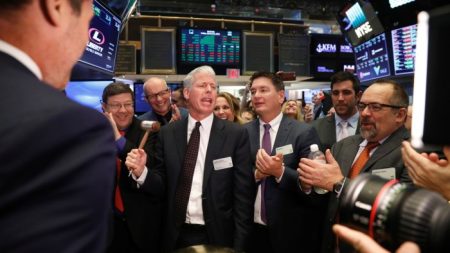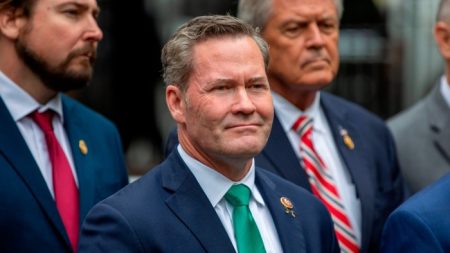Unlock the Editor’s Digest for free
Roula Khalaf, Editor of the FT, selects her favourite stories in this weekly newsletter.
The US economy added 275,000 jobs last month, beating forecasts, but big downgrades to previous figures fuelled expectations of as many as four interest rate cuts this year.
The non-farm payroll figures for February surpassed economists’ predictions of 200,000 new jobs and indicated that the US’s services sector remains strong.
However February’s 275,000 jobs number was eclipsed by the revised totals for January and December, when 167,000 fewer posts were created than previously thought.
Bond yields dipped and stocks opened higher in response to the scale of Friday’s downgrades, as traders bet that a weaker labour market would allow the US Federal Reserve to cut interest rates sooner.
“The downward revisions to previous months’ gains leave recent growth looking less strong than previously thought,” said Capital Economics, a consultancy, in a note.
The futures market fully priced in a quarter-point interest rate cut for June, shifting forward expectations.
Traders briefly priced in four interest rate reductions this year in the immediate aftermath of the release. The Fed itself forecasts three cuts this year.
The two-year Treasury yield, which moves with interest rate expectations, dipped, leaving it down 0.05 percentage points on the day at 4.46 per cent.
The S&P 500 was up about 0.5 per cent in mid-morning trading on Friday and on track to close at a record high.
In Friday’s release, the Bureau of Labor Statistics downgraded the new jobs total for January from a blockbuster initial reading of 353,000 to 229,000. December’s figure was cut from 333,000 to 290,000.
The BLS said February’s unemployment rate rose to 3.9 per cent from 3.7 per cent the month before. Wage growth also slowed, with average hourly earnings rising just 0.1 per cent in February.
“The robust February payroll figure is more than offset by downward revisions to December and January, the rise in the unemployment rate and the low wage figure,” said Stephen Stanley, US economist at Santander Bank.
“Still, the overall picture in my view is that the labour market is still healthy.”
The February data indicated that job growth remained concentrated in the services sector, with significant increases in payrolls in healthcare, hospitality and the public sector.
“The strength of the economy continues to be in the services sector and we know [services inflation] is something that the Fed is watching,” said Diane Swonk, chief economist at KPMG US.
Consumer Price Index inflation figures for February are due out on Tuesday.
US Federal Reserve chair Jay Powell said on Thursday that the US central bank was “not far” from having the confidence to start lowering borrowing costs, as it awaited more concrete evidence that inflation is on track to hit the bank’s 2 per cent target.
But other rate-setters think there are signs that the US economy is too strong to warrant lower borrowing costs.
Wei Li, global chief investment strategist for BlackRock, said that the US labour market remained tight, arguing that the Fed would cut rates, “but not as soon or as early as the market has been expecting”.
She added: “A June start for cuts is our baseline expectation, with three cuts this year.”
Read the full article here














